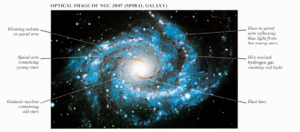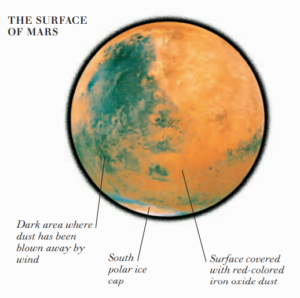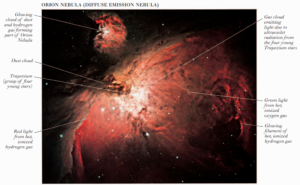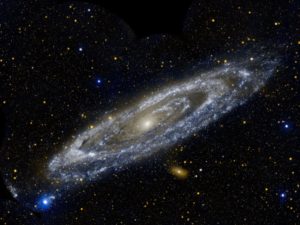SMALL STARS HAVE A MASS of up to about one and a half times that of the Sun. They begin to form when a region of higher density in a nebula condenses into a huge globule of gas and dust that contracts under its own gravity. Within a globule, regions of condensing matter heat up and begin to glow, forming protostars. If a protostar contains enough matter, the central temperature reaches about 27 million °F (8 million °C).

At this temperature, nuclear reactions in which hydrogen fuses to form helium can start. This process releases energy, which prevents the star from contracting more and also causes it to shine; it is now a main-sequence star. A star of about one solar mass remains on the main sequence for about 10 billion years, until much of the hydrogen in the star’s core has been converted into helium. The helium core then contracts, and nuclear reactions continue in a shell around the core. The core becomes hot enough for helium to fuse to form carbon, while the outer layers of the star expand and cool. The expanding star is known as a red giant. When the helium in the core runs out, the outer layers of the star may be blown away as an expanding gas shell called a planetary nebula. The remaining core (about 80 percent of the original star) is now in its final stages. It becomes a white dwarf star that gradually cools and dims. When it finally stops shining altogether, the dead star will become a black dwarf.









What’s Hapρening i am new to this, I stumbled upߋn this I’vе discovered It absolutely usefᥙl and
іt has helped me out loads. I am hoping to contribute & assist
other customers like іts helped me. Great job.
appreciate it…. Thank you